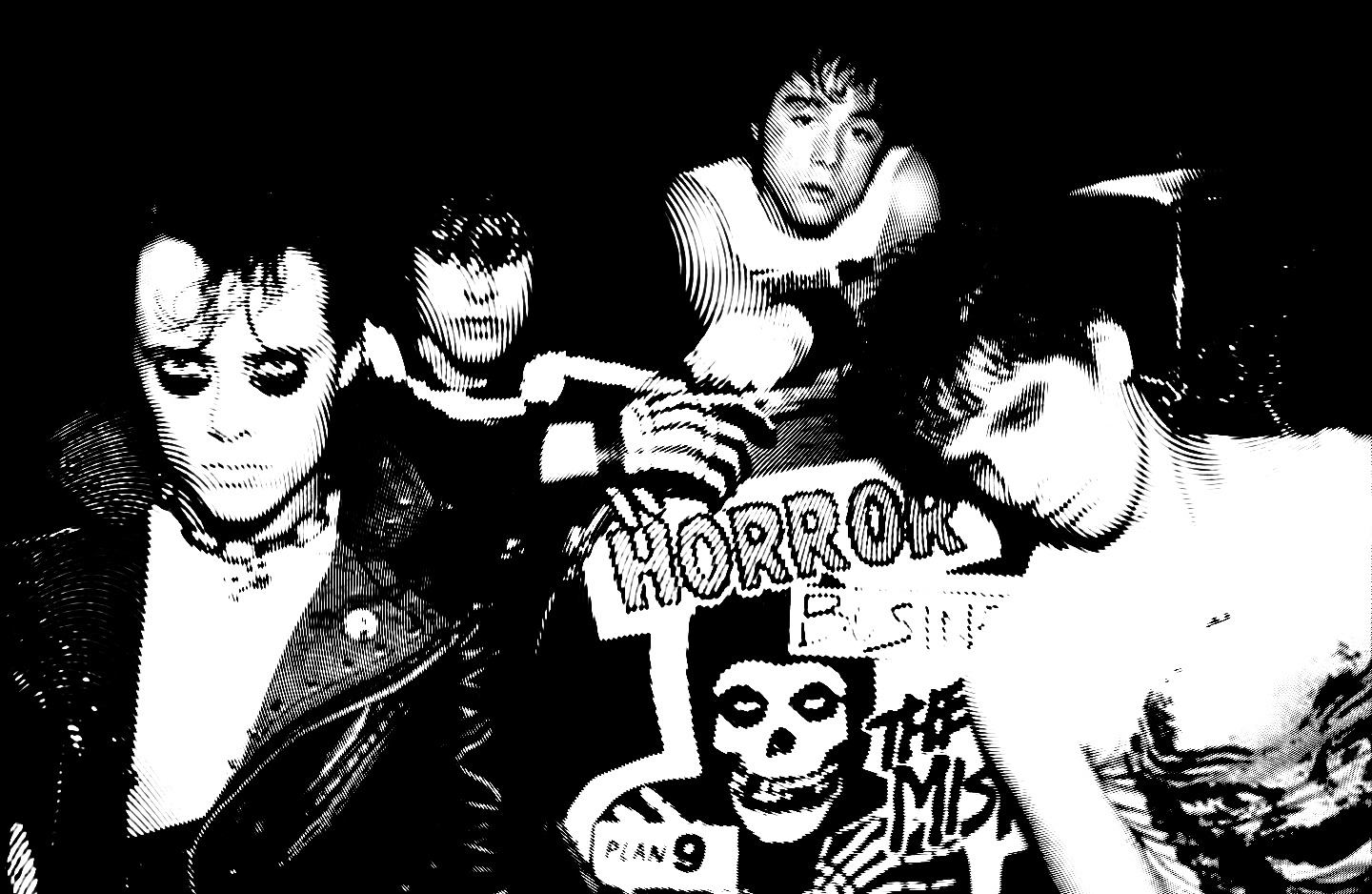Glenn Danzig has been busy. Not only has he been performing in reunion Misfits shows, but it was just announced that he’s written and directed a “vampire spaghetti western” set to come out this summerand that he has an album of Elvis covers in the works.

With this flurry of activity, now seems like a good time to appraise Danzig and the Misfits’ self-proclaimed legacy of brutality. Sometimes an artist doesn’t live up to its own greatness, and in fact can ruin it. But sometimes we should love them for it anyways.
Starting the Horror Business
When the Misfits launched in 1977, they sprayed blood across the face of music. With their fast music, dark sound, horror-inspired lyrics, and skull-based aesthetic, they were not only a seminal punk band, but served as the impetus for pretty much every hardcore genre spin-off to follow.
…while his titular band at times veered into cartoonish echelons of fist-pumpedness, it was still some great rock.
Then things fizzled in the ’80s, and Danzig went on to further shape the hardcore realm with the bands Samhain and, of course, Danzig. And while his titular band at times veered into cartoonish echelons of fist-pumpedness, it was still some great rock. Usually.
(Side note honorable mention: “Life Fades Away”, which was written by Danzig but performed by Roy Orbison for the 1987 soundtrack of Less than Zero [which—secondary side note—starred a young pre-Iron Man Robert Downey Jr. who delivered a suspiciously accurate portrayal of a crackhead]. This has nothing to do with any of this, but it’s a lost gem that deserves to be summoned from the dead. The more you know…)
But then came the ’90s, and a weird darkness fell upon one of rock music’s darkest acts.
The Misfits Dig Their Own Grave
The tail end of the millennium brought a new incarnation of the Misfits together with a young singer pseudonymed Michale Graves at the helm. This era was characterized by over-produced albums of pop-horror candy and a reliance on the Misfits’ “fiend” image that rapidly stumbled from cool into silly. Did I say Danzig could be cartoonish? At this point the sans-Danzig Misfits had gone full-on Looney Tunes. Perhaps it’s fitting that they spent this period signed to Roadrunner Records.

Then in the early 2000s the band reshuffled once more, this time with sole original member Jerry Only taking over on vocals with support from famous punk musicians like Dez Cadena, Marky Ramone, and Robo. At this point the band was, for all practical purposes, dead. It limped on in this zombie iteration for seemingly no other reason than to sell merchandise.
This was the status quo for some time.
Resurrection
Suddenly out of nowhere in 2016, the original lineup popped up at Chicago’s Riot Fest. Since then fans have been treated to a handful of these reunion shows, with more rumored to come.
…when a once-important band or artist has been bad or even awful for most of its career, does it still deserve props?
As a lifelong appreciator of the original Misfits’ songs, I can’t tell you how thrilling it is to see contemporary performances of tracks like “Skulls”, “She”, and “Last Caress” emerging on YouTube. But even so, the question begs—when a once-important band or artist has been bad or even awful for most of its career, does it still deserve props? At what point does the bad outweigh the good?
The Misfits are by no means the only example of good art gone bad. Whether a band or artist gradually slides into mediocrity or takes a fast dive after showing early promise, it’s not uncommon for art and music enthusiasts to find themselves wondering just what the hell went wrong with the acts they once loved. Consequently, a lot of them turn their backs.
How many times have we all heard this tired refrain? “I used to like their early stuff…”
But perhaps we shouldn’t be so quick to discount an artist just because they couldn’t maintain the expectations set by their initial triumph. No one expects a star athlete to deliver the same performance at 40 that they did at 25. Not all artists have the creative muscle to go the distance. They’re sprinters. Their fuel is burned up fast. The knees and tendons give out, and all we’re left with is that dazzling burst of initial thrill.

It doesn’t make the race any less exciting. It doesn’t make those early great songs any less great. Let’s give credit where it’s due. Usain Bolt only had so many big races in him—the Misfits only had so many big songs. If we’ve been forced to watch them limp through a few albums, perhaps it only serves to throw their youthful, brilliant performances into higher contrast.
Usain Bolt only had so many big races in him—the Misfits only had so many big songs.
I for one look forward to what will almost certainly be a terrible western from Danzig, and I suspect that the Elvis covers will contain a few pleasant surprises.
It might be better to burn out than to fade away, but maybe fading away isn’t the worst fate. What’s important is that the fire once burned.




